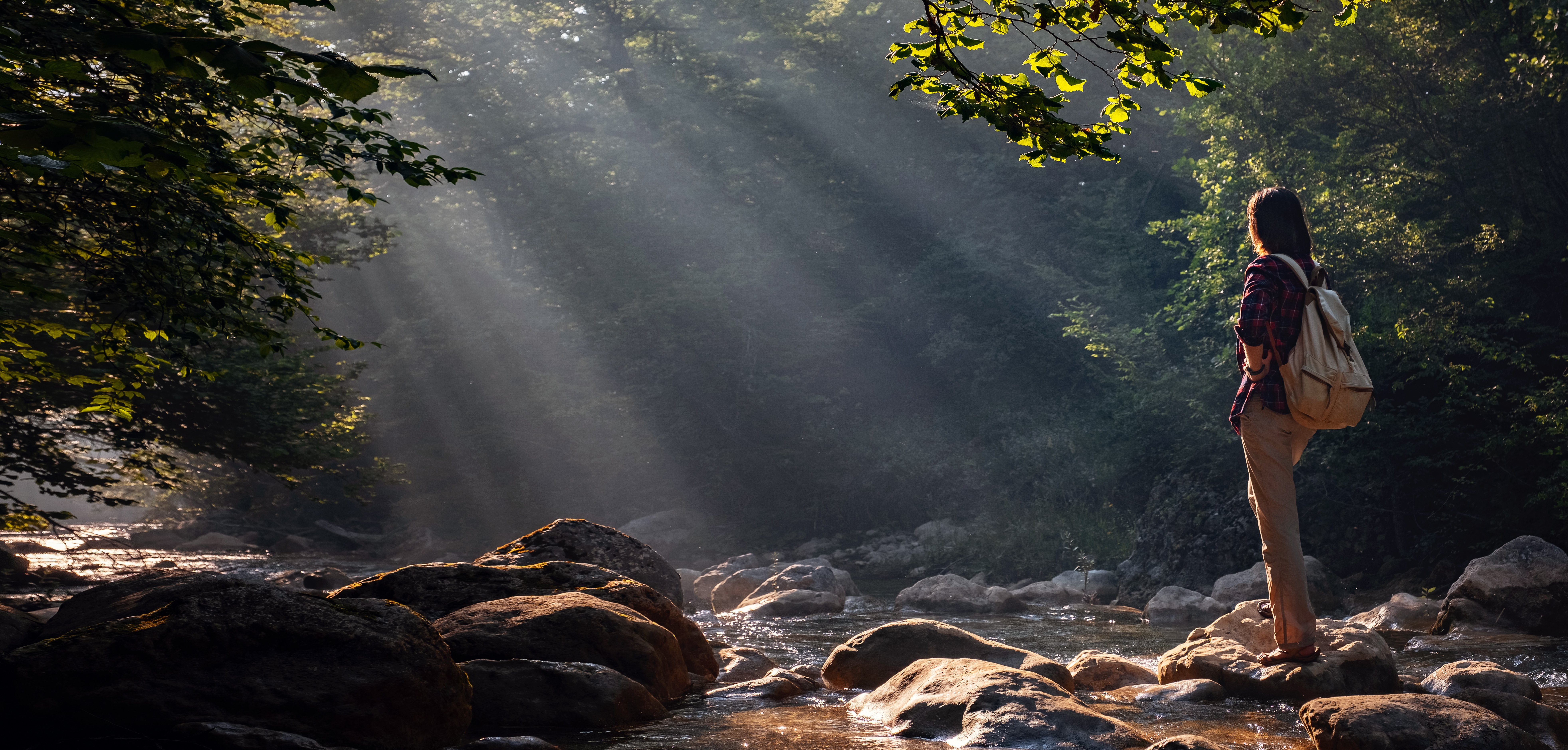
Here are three ways to experience Sri Lanka:
- Join a tour that packs in as many temples and ruins as possible. Be sure to ride the famous Kandy-Ella train, pushing other tourists out of the way so you can get cute Instagram pics.
- Spend three weeks walking the newly created Pekoe Trail, a 186-mile (300 km) trail through the central highlands that visits tea plantations, wild parks, and remote villages.
- Check into a beach resort in Unawatuna. Wake up, surf, hang with the locals. Repeat.
More and more people are choosing options like B or C for their vacations — opportunities to step out of life’s hectic current and live in the moment. It’s all part of the slow travel trend.
What is slow travel?
“Slow tourism is characterized by reducing mobility and by taking time to explore local history and culture, while supporting the environment. The traveler’s main goals are relaxation, self-reflection, escape, novelty seeking, engagement and discovery,” according to the Journal of Travel Research.
In essence, slow travel is less about collecting experiences and photos and more about making meaningful connections with places and people. It isn’t a new concept, but it has been building in popularity for years.
Slow travel appeals to earth-conscious travelers, wellness travelers, and anyone who just needs a break. A recent global survey conducted by Hilton and Ipsos revealed that travelers’ number-one reason to travel is to rest and recharge.
So how can hotel operators capture this slow-travel audience?
Focus on guests’ sleep experience.
The Hilton-Ipsos report found that sleep quality is a major motivator for those “rest and recharge” guests. It may be time to get back to basics and assess your guests’ sleep experience. What do reviews say about mattress, pillow, and bedding quality? How many complaints do you get about noise in rooms?
Look to the competition to get ideas for improving guests’ sleep. High-end hotels furnish herbal teas, pajamas, a pillow menu, an herbal sleep aid, and essential oils. To keep expenses down, you can provide a sleep accessories menu instead of adding products to every room. The Langham Hotels & Resorts invites guests to order slumber-inducing items like a white noise machine and weighted blankets.
High-quality guestroom products, such as easy-to-use alarm clocks and intuitive coffee makers, can also help your guests rise and shine.
Invite guests to stay longer.
Hotel guests’ average length of stay (ALOS) has been increasing, a change driven by longer stays by transient leisure travelers. Customer demand on “shoulder days” (Thursday and Sunday) has also gone up, according to research by Kalibri Labs.
What can you do to increase your ALOS?
- Offer multi-night incentives, such as discounts for dining or spa services, or a small free gift
- Emphasize your loyalty program
- Host events, such as a Thursday-night lobby cocktail hour
- Suggest multi-day itineraries based around your hotel’s location
- Add extended-stay guestroom appliances to rooms to give them a more home-like feel: full-size coffeemakers, toasters, commercial kettles, etc.
Invest in sustainability efforts.
Slow travelers are often motivated by a desire to tread lightly on the Earth, and it’s important to them that their accommodations share that vision. You don’t have to be an off-the-grid eco-resort to attract this clientele, but you do need to find meaningful ways to communicate your sustainability initiatives. Consider getting a hotel sustainability certification through a reputable program.
Provide mindful experiences.
Travelers crave experiences that are culturally authentic, hyper-local, and exclusive. They don’t want to eat at the big dinner-and-a-show tourist restaurant but would love to join a small group for a guided street-food tour. Consider: What kind of experiences can your property offer that satisfy the slow-travel crowd? Some popular options are cooking classes, guided hikes or cycling trips, foraging experiences, conservation projects, journaling or drawing classes, astronomy walks.
These activities don’t have to be elaborate. “A day spent strolling through an unfamiliar neighborhood without a crammed to-do list or exploring a state park with nothing, but a route map and a bag of snacks could fall under the umbrella of slow travel,” as travel writer Sebastian Modak puts it. “It comes down to how you engage with the world as you move through it.”
Hamilton Beach Commercial helps you keep guests happy with durable, intuitive foodservice equipment and guestroom appliances. Discover our full range of products for hospitality.


